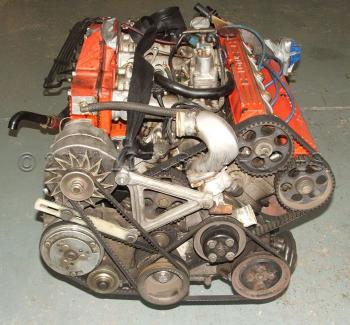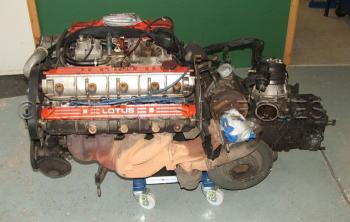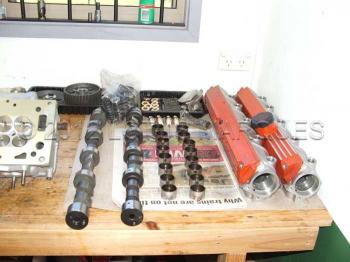Introduction
Rebuilding a Lotus Turbo Esprit engine may seem like a daunting task but if a logical approach is taken throughout the process, then a high quality and durable result can be achieved.
When these engines were first designed and built, they were considered to be a complex design that shifted the boundaries of an "expensive exotic multi-valve engine" into an affordable road going sports car.
However today most standard road going vehicles with fuel efficient engines are usually of a multi-valve configuration with fuel injection so the majority of manufacturers have caught up.
At the time Lotus introduced the 900 series of engines they constantly set new benchmarks in terms of power output with both normally aspirated and turbo-charged engines.
The design of the Lotus Esprit over-head twin cam with sixteen valves dictates there are lots of moving parts and so its going to be complex.
However it should not be over looked that Lotus 900 series engines are still a four cylinder, four stroke engine that pushes the performance boundaries in terms of brake horse power per litre.

Part two of this document discusses the necessary step and procedures to ensure a quality engine rebuild based on 35 years experience.
There are many issues the Lotus Factory never anticipate when the various 900 series engines were assembled over a 25 year period.
Whether we like it or not most engine components have a design life and do not last forever.
Many of the problems only just appearing, are not in any Lotus publication or been circulated in the public arena.

Part two of this document has a number of chapters that cover dismantling, inspection plus diagnostic checks of major components and sub-assemblies
Chapter 1 - Cylinder head
Chapter 2 - Head gasket
Chapter 3 - Crankshaft
Chapter 4 - Connecting rods
Chapter 5 - Flywheel
Chapter 6 - Clutch
Chapter 7 - Cylinder liners
Chapter 8 - Cylinder block
Chapter 8 - Camshafts
Chapter 9 - Camshaft timing belt pulleys
Chapter 10 - Crankshaft timing belt pulley
Chapter 11 - Camshaft housings
Chapter 12 - Cam followers
Chapter 13 - Pistons
Chapter 14 - Oil pump
Chapter 15 - Setting and adjusting camshaft timing
Chapter 16 - Crack testing techniques
Chapter 17 - Machining operations and surface finishes
Chapter 18 - Repairing damaged threads and heli-coils
Chapter 19 - Using the correct sealants
Chapter 20 - Assembly techniques
Chapter 21 - Torque wrenches
Chapter 22 - Special tools

The various chapters also contain additional information that is omitted from the Lotus Service Manuals
This comprehensive guide to dismantling and systematically re-assembling the Lotus Turbo Esprit engine is available to valued customers who purchase parts from Lotus Marques.
Copyright © 2011 Lotus Marques
